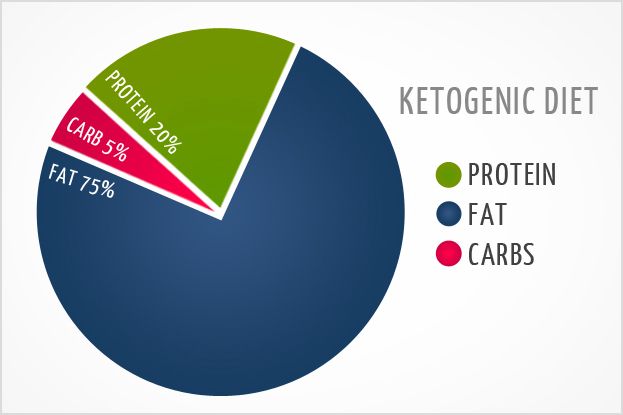Article
The Ketogenic Diet for Seizure Control
With so much emphasis on reduced-fat" or fat-free" foods, it could come as a surprise that studies have been conducted on the usefulness of the ketogenic diet for seizure control.
The ketogenic diet (KD) focuses on consuming fats and proteins like meat, fish, and poultry while simultaneously limiting carbohydrates like sugars and starches.1 When the KD’s in full effect, fats become the primary body fuel instead of carbohydrates.2

With so much emphasis on “reduced-fat” or “fat-free” foods, it could come as a surprise that studies have been conducted on the usefulness of the KD for seizure control.
Beta-oxidation turns fatty acids into ketone bodies that can be used to generate adenosine triphosphate (ATP). This is important to note because it means ATP can still be generated in the fasting (or unfed) state without the consumption of carbohydrates.
The KD originally generated interest in the 1920s when fasting had a noticeable effect on seizures. With the development of antiseizure drugs over the next couple of decades, there was a predictable collapse of interest in the diet-based treatment.3
Mechanisms for how this diet controls seizures have been proposed, but none are proven. They are3:
- ATP production changes altering neuronal metabolic demands during seizures
- Brain pH adjustments affecting neuronal excitability
- Ketone bodies or fatty acids directly inhibiting ion channels
- Shifts in amino acid metabolism favoring the synthesis of GABA
One review looked at how the KD and modified Atkins diet (MAD) helped with seizure control in adults. Across the 5 studies reviewed, 32% of KD-treated patients achieved ≥50% seizure reduction while a slightly lower 29% of MAD-treated patients hit that same target. Even more drastic was the 9% KD-treated and 5% MAD-treated patients that achieved >90% seizure frequency reduction.4
However, this review only examined a total of 47 patients, thus highlighting a major limitation of its application to practice. Another limitation could be its methodology, as all trials included were open label.4
Of interest is the contrast between the KD and MAD. With a ratio of 3:1 and 4:1 fat to carbohydrate + protein, the KD is more restrictive and harder to shop for. The MAD consisted of a 0.9:1 fat to carbohydrate + protein ratio.4 The treatment regimens quickly become complex, making that a whole separate topic in itself.
Another review included 7 studies with 427 children and adolescents. Although a meta-analysis couldn’t be conducted because of variance between the studies, there were some promising results. No conclusive data was determined, yet the limiting adverse effect of gastrointestinal disturbances appeared to cause a noticeable patient dropout rate.5
The Epilepsy Foundation has acknowledged the KD as a treatment option and provides an educational summary about the diet on its website. It’s encouraging that a major patient advocacy group is willing to publish information about a treatment option far from common practice. The health care professional is responsible for being aware of various patient treatment options so the best care possible is provided.
In addition to seizures, the KD has been suggested to treat neurodegenerative disorders (eg, Alzheimer’s, Parkinson’s), metabolic defects, migraines, and other disease states.3 Although the KD isn’t a mainstream form of treatment, the possibility that there may be clinical significance in using dietary means for certain medical conditions can’t be ruled out. This isn’t an endorsement for the KD as much as an expression of interest that, depending on nutritional intake, the body can make astounding adaptations to help control debilitating conditions.
References
- Ketogenic Diet Resource. ketogenic-diet-resource.com/. Accessed July 22, 2016.
- Ketogenic Diet. Epilepsy Foundation. epilepsy.com/learn/treating-seizures-and-epilepsy/dietary-therapies/ketogenic-diet. Accessed July 22, 2016.
- Barañano KW, Hartman AL. The ketogenic diet: uses in epilepsy and other neurologic illnesses. Curr Treat Options Neurol. 2008;10(6):410-419.
- Klein P, Tyrlikova I, Mathews GC. Dietary treatment in adults with refractory epilepsy: a review. Neurology. 2014;83(21):1978-1985.
- Martin K, Jackson CF, Levy RG, Cooper PN. Ketogenic diet and other dietary treatments for epilepsy. Cochrane Database Syst Rev. 2016;2:CD001903.















